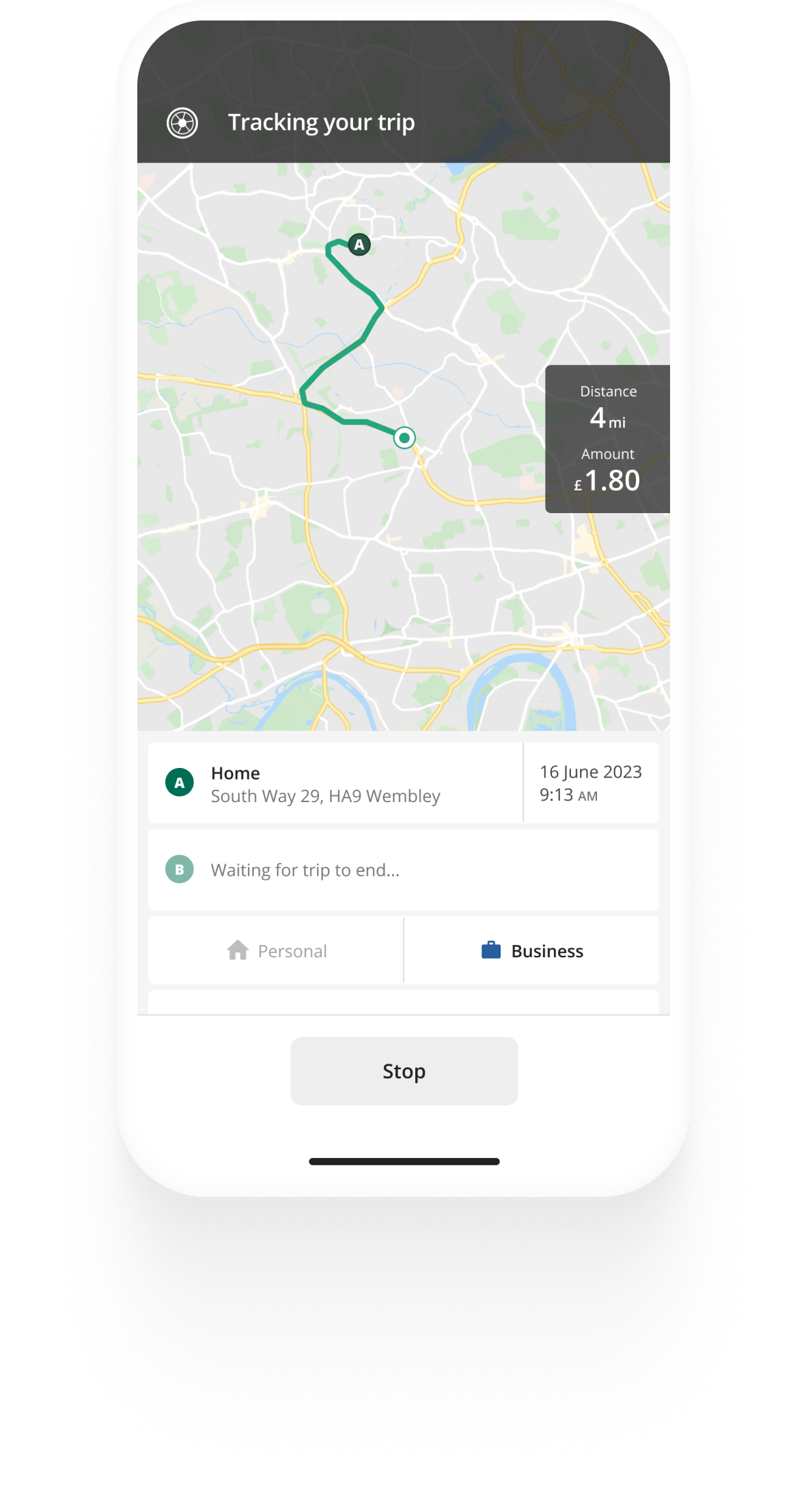Track mileage automatically
Get startedDriver’s log book
In Great Britain, some commercial drivers are required to maintain a driver’s log book, also known as an hours log, in order to keep track of their working hours. In this article, we focus on the GB domestic rules on hours’ logs and what you need to fill out each day as a commercial driver of a goods vehicle.
Who needs to fill out a driver’s log book
According to HMRC, most goods vehicle drivers exempt from the EU rules must maintain a log of their working hours. The so-called “domestic rules” have a few exceptions for keeping a driver’s log book.
- The first exeption is for vehicles used by the police, firefighters and military, and any commercial vehicles exclusively driven off the public road system.
- Another exception concerns drivers who stay within a less than 50 km radius from the operating centre of the vehicle in a day and don't drive for more than 4 hours on the same day. Then, a log book is also not required by law.
Note that North Ireland is subject to different rules on drivers’ log books.


Mileage tracking made easy
Trusted by millions of drivers
Automate your mileage log Automate your mileage log

Automatic mileage tracking and HMRC-compliant reporting.
Get started for free Get started for freeRules on domestic driving hours
The set domestic driving limits stipulate that drivers cannot be on duty for more than 11 hours and a maximum of 10 can be allocated for driving in a single day. The domestic rules for drivers do not set out a prescribed amount of time for rest, although employers are obliged to ensure that drivers have “adequate rest”.
Some drivers are exempt from the duty hours limit, so long as the gross weight of the goods vehicle doesn’t exceed 3.5 tonnes in weight, such as medical personnel, maintenance, inspection, cleaning and similar services, broadcasting, and the AA, RAC and RSAC.
Another exemption from the duty hours is for drivers who don’t drive more than 4 hours a day throughout a full week. In this case, these drivers are exempt from the duty hours limits for that same week.
How to fill out a driver’s log book
Your hours' log should be kept up to date to prove you respect the set driving limits for goods vehicles drivers.
According to HMRC, you can use either a paper hours log book or an EU-approved and sealed tachograph.
Logbooks are normally for a week’s worth of data and should contain the driver’s name and the period covered in the log sheet.
For each day, your driver’s log book should contain the following details:
- The day and registration number of the vehicle
- The place where the vehicle is based
- The time of going on and off duty
- The amount of time spent driving, and the amount of time spent on duty
- The driver’s signature
Finally, drivers must submit the hours' log book to their employer up to 7 days from the logbook’s completion. Employers must check and approve the hours' log book, including their signature and job position, then keep the log copy and return the original to the driver before their next duty.
Do you receive mileage reimbursement for your work-related driving? Find out more about reimbursement and deductions in our HMRC mileage guide, and check out how to keep a compliant HMRC mileage log for mileage reimbursement or deductions.
FAQ

Tired of logging mileage by hand?
Effortless. HMRC-compliant. Liberating.
Related posts
Free mileage log book template
Latest update: 7 May 2025 - 2 min read
Whether you're an employee or a business owner, it's crucial to keep good mileage records in a mileage log book.
HMRC Mileage Guide
Latest update: 2 April 2025 - 5 min read
Welcome to our guide on mileage claims and reimbursement in the UK. This guide will walk you through the rules that apply to your situation.
HMRC travel expenses guidelines
Latest update: 6 January 2026 - 2 min read
This guide for employers, employees, and sole-traders offers an overview of what you need to know if you're seeking tax relief or reimbursement for travel expenses.
.svg)

